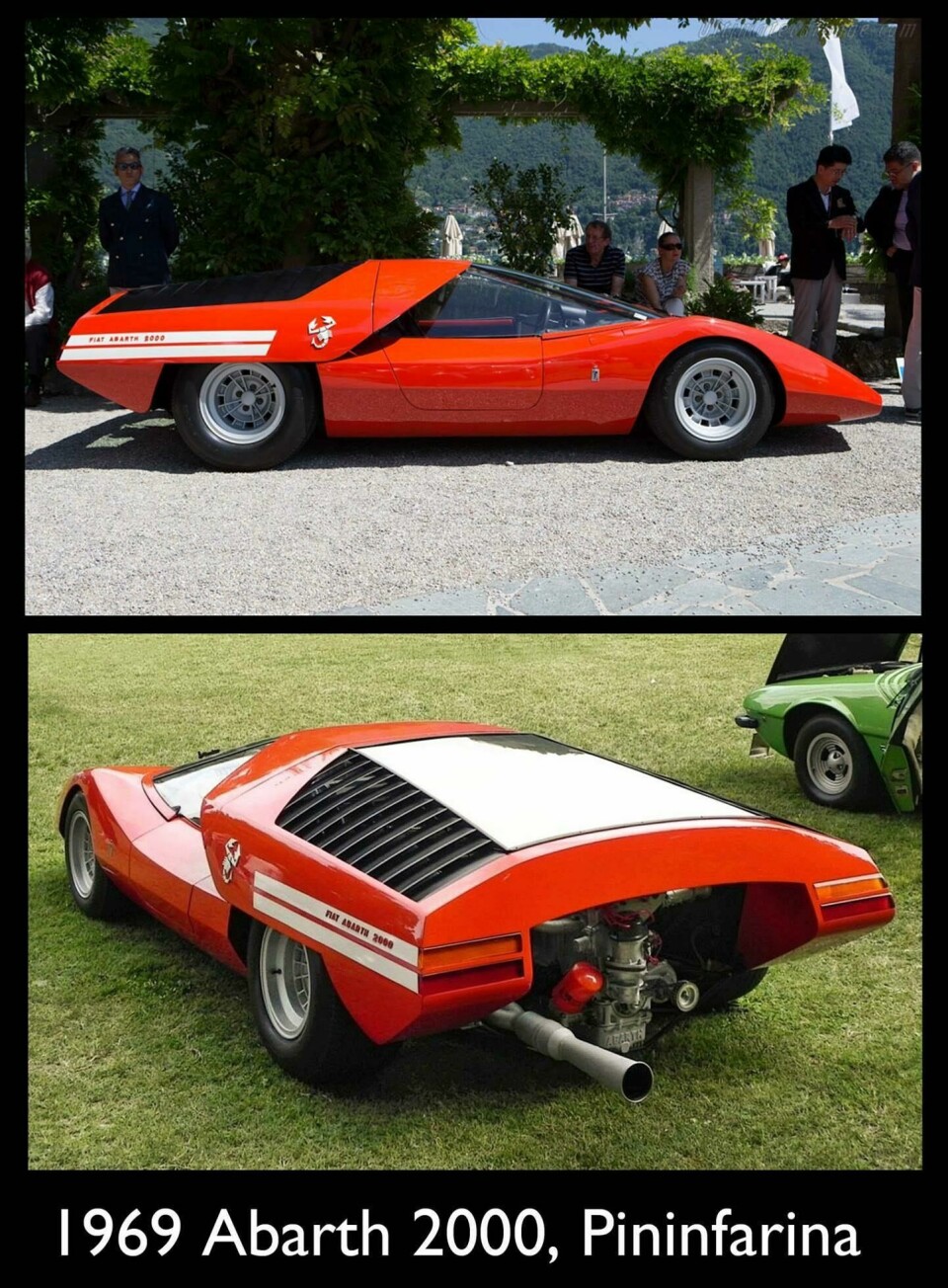
Is this one of the very best Pininfarina concept cars? By Peter Stevens
Tracing Abarth’s impact on design since the 1969 Turin Motor Show
It is almost impossible to believe that it is 46 years since the Pininfarina Abarth 2000 Scorpione concept car was first shown at the 1969 Turin Motor Show. Except for the wheels and tyres, this fabulous car would look modern right now. What is most interesting is that the engineering package is not totally ‘designer friendly’; the engine is not mid positioned as you might expect, it hangs out the back of the car. It is very much rear-engined, but the proportion is great, the detailing crisp and perfect and the stance is just right. So what has progressed in the last forty years?

The lead designer on the Abarth 2000 concept was Filippo Sapino, then at Pininfarina but later the head of the Ghia Studio when it was owned by Ford. 1969 was a great year for Sapino; as well as the 2000 Abarth he was responsible for the Ferrari 512S concept; another great looking car. Gently curved and slightly twisted surfaces joined by crisp edges were his trademark at that time.

The 2000 ‘Scorpione’ was a high point for Abarth in 1969, a few years before the company became wholly owned by Fiat and Abarth simply became a name for the company’s sporting models.
Karl Alberto Abarth was born in Austria in 1908, but was later naturalised as an Italian citizen; and at this time his first name, Karl, was changed to its Italian equivalent, Carlo. Abarth was born in Vienna and, as a teenager, worked for Castagna in Italy (1925–27), designing motorbike and bicycle frames. He also raced motorbikes himself, winning his first race on a James Motorcycle in Salzburg on 29 July 1928. He was European motorcycle champion five times.

He moved permanently to Italy in 1934, where he met Ferdinand Porsche’s son-in-law Anton Piëch (who’s secretary Abarth had married in the meantime) and there he opened the Italian Porsche Konstruktionen agency (1943–48). The first automobile outcome of this cooperation was the rather unsuccessful Tipo 360 F1 prototype – a groundbreaking design that, as is so often the case, suffered from under-funding.
Carlo Abarth then founded the Abarth & C. company with Armando Scagliarini in Turin on March 31 1949, using his astrological sign, Scorpio, as the company logo. The company made both road and racing cars, and became a major supplier of high-performance exhaust pipes that still are in production as ‘Abarth’.

Carlo Abarth personally set various speed records at the Autodromo Nazionale Monza in beautifully streamlined Fiat-engined record cars. His cars were almost all based on humble and low-cost Fiat models, usually 500s and 600s, although he also used the Simca 1000 floor pan for the 1000 ‘Bialbero’ (Twin-cam). Later sports racing models like the 1000 and 2000 SPs used Abarth’s own tubular chassis but always with rear-mounted highly-tuned Fiat motors and often with Abarth twin-cam cylinder heads. He sold the company on 31 July 1971 to Fiat and continued a while as a CEO and then moved back to Vienna, Austria.

What I have always particularly liked about Abarth sports-racer is that they always looked so ‘right’ – the graphics were always clear and simple, the aerodynamic additions were only ever painted white whilst the cars were Italian racing red. The was no better looking 1000cc race car than the little 1000SP in its 1972 form, whilst the 1965 OT 1300 ‘Periscopio’, with its tall roof-mounted engine air-intake was at least as great to look at as any Ferrari.

Way back when I was at the RCA as a post graduate student I was lucky enough to own first an Abarth 750 Zagato, called a ‘Double Bubble’ because of the shape of its roof; and then later I bought a ‘Bialbero’ (Twin-cam) which had an amazing 1000cc, 100bhp motor. Since it weighed around 750kg it was very quick and fantastic fun; and the really frustrating thing now is that at the time these were really cheap little cars because back then no one wanted old race cars!




